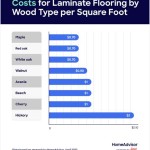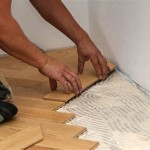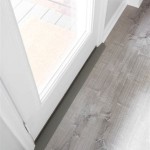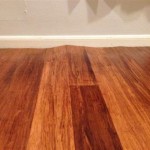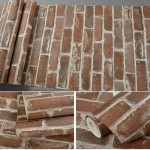Can You Lay Vinyl Flooring Over Floor Tiles? A Comprehensive Guide
The question of whether vinyl flooring can be installed over existing floor tiles is a common one for homeowners embarking on renovation projects. The appeal is understandable: avoiding the labor-intensive and potentially messy process of tile removal seems like a significant advantage. However, the answer is not a simple yes or no. The feasibility and success of laying vinyl flooring over tiles hinge on several crucial factors, including the condition of the existing tiles, the type of vinyl flooring being considered, and the preparation undertaken prior to installation. This article delves into the various aspects of this process, providing a thorough overview to help homeowners make informed decisions.
The popularity of vinyl flooring has surged in recent years due to its durability, water resistance, and aesthetic versatility. Available in various forms, such as sheet vinyl, vinyl planks, and vinyl tiles, it offers a cost-effective alternative to traditional flooring materials like hardwood, ceramic tile, or stone. Laying vinyl flooring over existing tiles, if done correctly, can save time and money, minimizing disruption to the home and reducing the amount of construction waste generated. However, proceeding without proper assessment and preparation can lead to unsatisfactory results and potential future problems.
Before initiating any work, a thorough evaluation of the existing tile floor is paramount. This evaluation should encompass several key areas, including the integrity of the tiles, the flatness of the surface, and the type of grout used. Any underlying issues with the tile floor will inevitably telegraph through to the vinyl flooring, undermining its performance and appearance. Addressing these issues upfront is crucial for a successful outcome.
Assessing the Condition of the Existing Tile Floor
The condition of the existing tile floor is the single most important factor determining the suitability of laying vinyl flooring over it. Any loose, cracked, or uneven tiles must be addressed before proceeding. Loose tiles can shift and create voids beneath the vinyl, leading to unevenness and potential damage. Cracked tiles can exacerbate the problem, potentially causing the vinyl to tear or buckle. Uneven tiles will result in an uneven surface, which will be visible through the vinyl flooring and can create an uncomfortable walking surface.
A systematic inspection of the tile floor should involve visually examining each tile for cracks, chips, or signs of damage. Gently tap each tile to listen for a hollow sound, which indicates that the tile is not properly adhered to the subfloor. Any loose tiles should be carefully removed and the underlying subfloor inspected for damage. The area should be cleaned and repaired before installing a new tile, ensuring it is flush with the surrounding tiles.
Cracked tiles should also be removed and replaced. If the damage is extensive, it may be more practical to replace a larger section of the tile floor. In some cases, it may be possible to repair small cracks with epoxy filler, but this is generally a temporary solution and may not be suitable for areas with heavy foot traffic. The goal is to create a stable and uniform surface that will provide a solid foundation for the vinyl flooring.
Even if the tiles appear to be in good condition, it is essential to check for lippage, which refers to the unevenness between adjacent tiles. Lippage can occur due to variations in tile thickness or improper installation. A straight edge or level can be used to identify areas where the tiles are not perfectly aligned. If the lippage is significant, it will need to be addressed before laying the vinyl flooring. Options include grinding down the high spots or applying a leveling compound to create a smooth and even surface.
Surface Preparation: Achieving a Flat and Smooth Substrate
Even if the existing tiles are in good condition, the grout lines can create an uneven surface that will be visible through the vinyl flooring. Grout lines are typically recessed below the surface of the tiles, and this difference in elevation can cause the vinyl to deform or show the grout pattern. To prevent this, it is necessary to fill the grout lines with a leveling compound to create a smooth and uniform substrate.
The leveling compound should be specifically designed for filling grout lines and creating a smooth surface for flooring installation. It is important to choose a product that is compatible with both the existing tiles and the vinyl flooring. The leveling compound should be mixed according to the manufacturer's instructions and applied evenly over the entire tile floor, ensuring that all grout lines are completely filled.
After the leveling compound has been applied, it should be allowed to dry completely according to the manufacturer's instructions. Once dry, the surface should be sanded smooth to remove any imperfections or ridges. A power sander with a fine-grit sandpaper can be used for this purpose. It is important to wear a dust mask and eye protection during sanding to avoid inhaling dust particles.
In some cases, it may be necessary to apply multiple coats of leveling compound to achieve a perfectly smooth surface. This is particularly true if the grout lines are deep or if there are significant variations in tile thickness. The goal is to create a seamless surface that will provide a solid and even foundation for the vinyl flooring. This step is crucial for ensuring a professional and long-lasting result.
Prior to applying the leveling compound, it is imperative to thoroughly clean the tile surface. This involves removing any dirt, dust, grease, or other contaminants that could interfere with the adhesion of the leveling compound. A degreasing cleaner can be used to remove any oily residues, and a vacuum cleaner can be used to remove any loose debris. The tile surface should be completely dry before proceeding with the application of the leveling compound.
Considerations for Different Types of Vinyl Flooring
The type of vinyl flooring being considered also plays a significant role in determining the feasibility of laying it over existing tiles. Sheet vinyl, vinyl planks (LVP), and vinyl tiles each have different characteristics that can affect their performance and suitability for this type of installation.
Sheet vinyl, which comes in large rolls, generally requires a smoother and more uniform substrate than vinyl planks or tiles. This is because sheet vinyl is more flexible and tends to conform to the contours of the underlying surface. Any imperfections in the tile floor will be more visible through sheet vinyl than through other types of vinyl flooring. Therefore, meticulous surface preparation is particularly important when installing sheet vinyl over existing tiles.
Vinyl planks and tiles, on the other hand, are more rigid and less likely to conform to minor imperfections in the underlying surface. This makes them a more forgiving option for laying over existing tiles. However, it is still important to address any significant unevenness or damage to the tiles before proceeding. Luxury vinyl planks (LVP) often have a thicker wear layer and are more durable than standard vinyl planks, making them a better choice for high-traffic areas or areas where there is a risk of moisture exposure.
The installation method also varies depending on the type of vinyl flooring. Sheet vinyl is typically glued down to the subfloor using a specialized adhesive. Vinyl planks and tiles may be glued down, or they may be installed using a click-lock system. Click-lock systems are easier to install and do not require adhesive, but they may not be as durable as glued-down installations. The manufacturer's instructions should always be followed carefully to ensure a proper and long-lasting installation.
Furthermore, consider the overall thickness of the vinyl flooring. Thicker vinyl flooring will generally be more durable and less likely to show imperfections in the underlying surface. It will also provide more cushioning and sound insulation. However, thicker vinyl flooring may also raise the floor level, which could create problems with doorways or transitions to other rooms. Careful consideration should be given to the overall thickness of the vinyl flooring and its impact on the surrounding areas.
Finally, it is worth noting that some manufacturers specifically recommend against installing their vinyl flooring products over existing tile floors. Always consult the manufacturer's instructions and warranty information before proceeding with the installation. Failure to follow the manufacturer's recommendations could void the warranty and lead to problems down the road.
In summary, while laying vinyl flooring over existing floor tiles is possible, it requires careful planning, thorough preparation, and adherence to best practices. A comprehensive assessment of the existing tile floor, meticulous surface preparation, and informed selection of the appropriate vinyl flooring type are all essential for a successful and long-lasting result. By following these guidelines, homeowners can achieve a beautiful and durable new floor without the expense and hassle of removing the existing tiles.

Should You Install Vinyl Floor Over Tile

How To Lay Vinyl Flooring Sheet Over Tiles

Can You Lay Vinyl Flooring Over Tile Mersey

How To Lay Tile Over An Existing Vinyl Floor Today S Homeowner

Can Vinyl Flooring Be Laid Over Laminate Go For Floors

Can You Lay Vinyl Over Tiles Luxury Flooring Floorbay

Lvt Flooring Over Existing Tile The Easy Way Vinyl Floor Installation Diy

Can You Lay Hybrid Flooring Over Tiles The Guys

How To Install Floating Vinyl Flooring Over Old Floors Simply2moms

Vinyl Tile Installation A Comprehensive Guide Gc Flooring Pros
Related Posts

